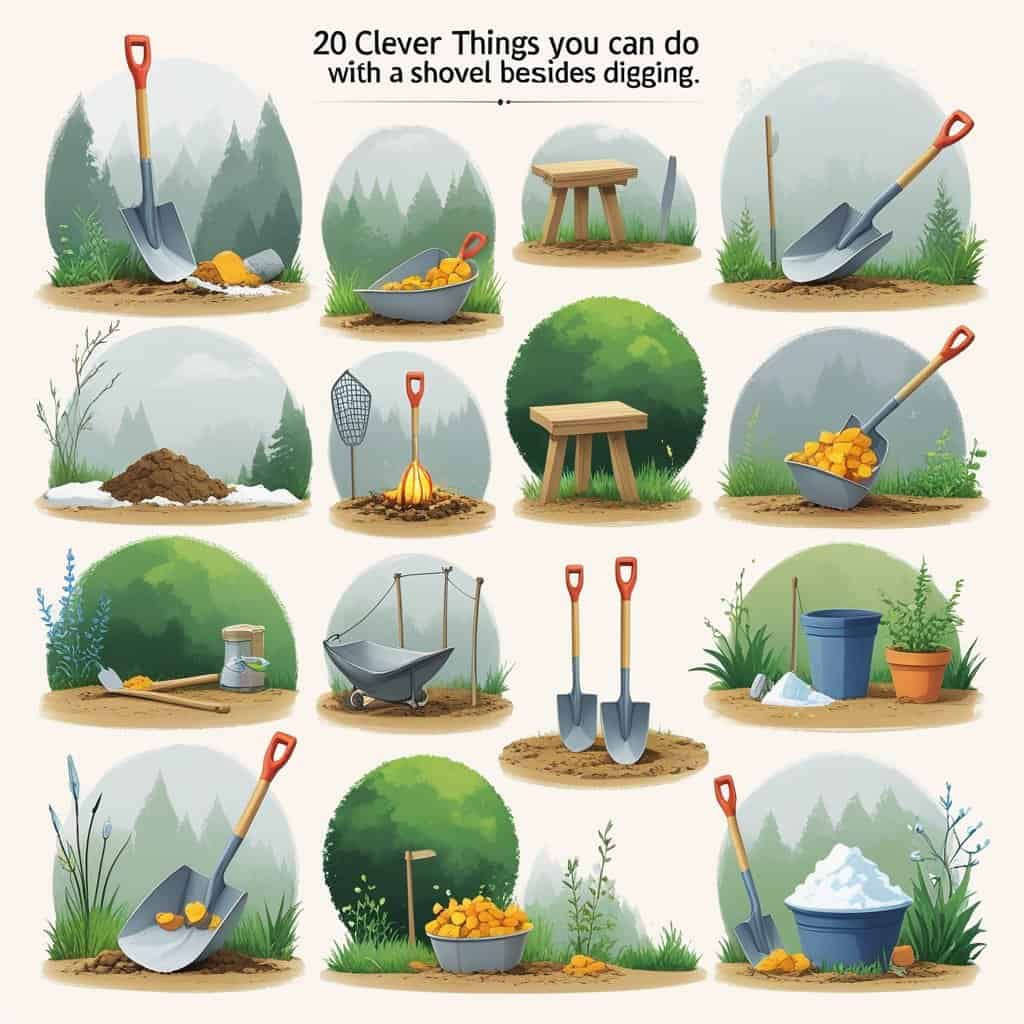The Cornish shovel is a type of shovel that traces its roots back to the county of Cornwall in England. The Cornish shovel, made from metal, with a long thin handle and a wide scooped blade, was used for centuries for digging trenches, laying foundations, and other manual labor tasks.
Table of Contents
The Cornish Shovels Evolution
The Cornish shovel, invented during the Industrial Revolution in Britain, was the go-to tool to move heavy materials quickly and efficiently. The design included fitting long curved handles to the shovel’s wide scooped blades, giving them the distinct angled shape they are known for today. The use of cornish shovels spread from Cornwall all over England due to their efficiency, with many of them now being used across Europe.
In modern times Cornish shovels have become invaluable tools for digging trenches, laying foundations, and other manual labor tasks. Their angled design allows them to cut through hard surfaces more quickly than other straight-bladed shovel designs can and also makes them well suited for lifting heavy materials without putting too much strain on the user’s body.
Unlike other types of shovels, Cornish shovels have an angled shape on their blades which helps them to cut through hard surfaces more easily than a straight-bladed design would be able to, making the Cornish shovel well suited for demanding projects such as working in masonry or breaking up concrete or rock. Cornish Shovels also tend to be better at lifting materials due to their shape, which puts less strain on the user.
The Cornish shovel is also well-balanced and has a lower center of gravity which helps to make it more efficient for heavy-duty tasks where digging in rugged terrain is required or where obstacles may need to be moved around quickly and with minimal effort from the user. Due to their unique design features, they are ideal for projects such as breaking up concrete or rock and have been an essential tool in mining.
DIY Projects Made Easier With A Cornish Shovel
Manual laborers still use Cornish shovels to dig trenches or lay foundations, but they have also found new uses in modern times. For example, landscapers, gardeners and homeowners often use Cornish shovels to quickly and easily move large amounts of soil or sand, plant trees or shrubs and break up larger pieces of debris such as rocks or concrete.
Aside from their elegant design, Cornish shovels are practical tools with many uses. Cornish shovels are handy for farming, gardening, landscaping, and other projects that require precision digging or lifting. The pointed tip is ideal for quick work of difficult digging, and the broad base makes it easier to scoop out the soil. Cornish shovels also have an ergonomic design that helps reduce strain on your arms when using them. In addition, Cornish shovels often come with a longer handle than traditional garden spades, which provides greater leverage when dealing with heavier loads and helps those of tall stature to reduce back pain.
As cornish shovels are incredibly durable and can withstand all sorts of wear and tear, they are an ideal choice for those looking for a reliable and effective tool for their gardening needs. The top ten uses of a cornish shovel in the twenty-first century include:
- digging trenches
- moving soil
- planting trees and shrubs
- turning compost piles
- removing weeds
- edging beds
- transplanting plants and bulbs
- scooping leaves and debris from lawns
- cutting roots
- aerating soil
- mining
- laying underground utilities such as gas, water, and electric lines
Types Of Cornish Shovels Available
Cornish shovels come in various shapes and sizes to suit different gardening needs. The most popular Cornish shovel is the spade, which has a broad base and pointed tip. It’s perfect for digging trenches, turning compost piles and scooping soil. Other Cornish shovel varieties include long handles and short handles as well as trowel style cornish shovels for close up work.
Final Thoughts
Cornish Shovels have proven themselves as invaluable tools over the centuries, with their efficiency and durability making them a staple in many industries. They are a symbol of Britain’s Industrial Revolution and a testament to human ingenuity, with their unique design features that make them efficient and durable enough for any task. Cornish shovels have become synonymous with manual labor tasks such as digging trenches or laying foundations, and today have transformed how homeowners, gardeners, farmers and landscapers work. Cornish shovels genuinely are a testament to the ingenuity of the Industrial Revolution.









